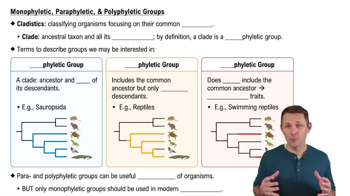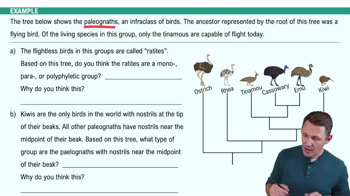Table of contents
- 1. Introduction to Biology
- 2. Chemistry
- 3. Water
- 4. Biomolecules
- 5. Cell Components
- 6. The Membrane
- 7. Energy and Metabolism
- 8. Respiration
- 9. Photosynthesis
- 10. Cell Signaling
- 11. Cell Division
- 12. Meiosis
- 13. Mendelian Genetics
- Introduction to Mendel's Experiments
- Genotype vs. Phenotype
- Punnett Squares
- Mendel's Experiments
- Mendel's Laws
- Monohybrid Crosses
- Test Crosses
- Dihybrid Crosses
- Punnett Square Probability
- Incomplete Dominance vs. Codominance
- Epistasis
- Non-Mendelian Genetics
- Pedigrees
- Autosomal Inheritance
- Sex-Linked Inheritance
- X-Inactivation
- 14. DNA Synthesis
- 15. Gene Expression
- 16. Regulation of Expression
- Introduction to Regulation of Gene Expression
- Prokaryotic Gene Regulation via Operons
- The Lac Operon
- Glucose's Impact on Lac Operon
- The Trp Operon
- Review of the Lac Operon & Trp Operon
- Introduction to Eukaryotic Gene Regulation
- Eukaryotic Chromatin Modifications
- Eukaryotic Transcriptional Control
- Eukaryotic Post-Transcriptional Regulation
- Eukaryotic Post-Translational Regulation
- 17. Viruses
- 18. Biotechnology
- 19. Genomics
- 20. Development
- 21. Evolution
- 22. Evolution of Populations
- 23. Speciation
- 24. History of Life on Earth
- 25. Phylogeny
- 26. Prokaryotes
- 27. Protists
- 28. Plants
- 29. Fungi
- 30. Overview of Animals
- 31. Invertebrates
- 32. Vertebrates
- 33. Plant Anatomy
- 34. Vascular Plant Transport
- 35. Soil
- 36. Plant Reproduction
- 37. Plant Sensation and Response
- 38. Animal Form and Function
- 39. Digestive System
- 40. Circulatory System
- 41. Immune System
- 42. Osmoregulation and Excretion
- 43. Endocrine System
- 44. Animal Reproduction
- 45. Nervous System
- 46. Sensory Systems
- 47. Muscle Systems
- 48. Ecology
- 49. Animal Behavior
- 50. Population Ecology
- 51. Community Ecology
- 52. Ecosystems
- 53. Conservation Biology
25. Phylogeny
Cladistics
25. Phylogeny
Cladistics
Practice this topic
- Multiple Choice
According to the tree below, “Fish” should most likely be considered what type of group?
150views1rank - Multiple Choice
According to the tree below, “monkeys” should most likely be considered what type of group?
150views3rank - Multiple Choice
Traditionally, scientists have identified 4 Kingdoms in the domain Eukaryota: the animals, the plants, the fungi, and the protists. Some scientists argue that the protists actually represent multiple kingdoms, and that there should be many more kingdoms in the domain Eukaryota. Based on the tree, why do some scientists argue for so many kingdoms?
132views2rank


